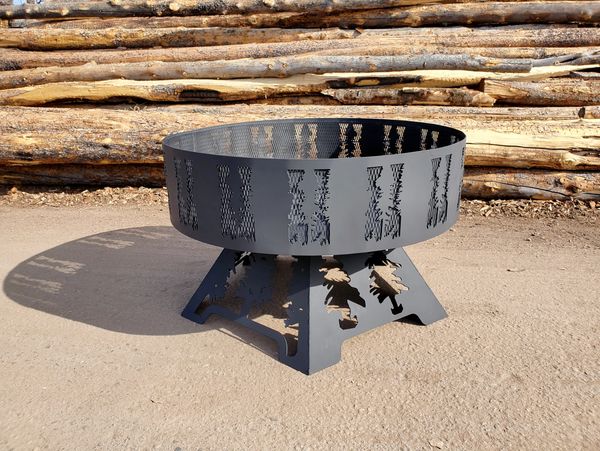The Dos and Don’ts of Fire Pit Maintenance

Metal fire pits offer durable options for enjoying cozy backyard fires, but you can make your pit last much longer by following maintenance best practices. It’s essential to understand the dos and don’ts of maintaining outdoor fire pits to get the most out of your investment. Below, we present some key considerations to help you keep your backyard fire pit in the best possible shape for years to come.
Looking for a metal fabricator to create a custom fire pit that meets your unique needs and design preferences? Visit the Koi Lagoon's metal shop Lasersmith Fabrication at 2000 E. Lincoln Ave. in Fort Collins, CO, or send us an email at info@lasersmithfabrication.com.
To Properly Maintain Your Backyard Fire Pit, DO…

1. Inspect Your Fire Pit Regularly
Regular inspections prove just as important for a wood-burning fire pit as for any other investment. Identifying potential problems early on makes them much easier to address, be it a spot of rust, a crack, a hole, or another sign of damage. We recommend inspecting your metal fire pit before every use and periodically if it remains unused for a long time.

2. Cover Your Fire Pit When Not in Use
One of the simplest ways to keep your backyard fire pit in the best shape involves keeping it covered when you’re not using it. If it’s easy to move, you may move it into a garage or shed between uses to keep it protected from rain, snow, or hail. You may also decide to cover it with a heavy duty tarp or other weather-resistant material.

3. Burn Dry, Untreated Firewood
Whether you burn wood in an outdoor fire pit, a wood-burning stove, or a traditional fireplace, choosing dry firewood will help prevent excessive buildup of creosote. This black, sticky substance can combust unexpectedly and releases carcinogens when burned. Firewood with too much moisture leaves behind more creosote and can cause your fire pit to become dirty more quickly.
Untreated firewood is equally important to avoid damaging the fire pit or exposing yourself or your loved ones to toxic chemicals. Wood that has been painted, stained, or otherwise treated should not be burned in a fire pit, stove, or fireplace. Examples of wood types you should avoid burning include:
- Old fence panels
- Old pallet wood
- Plywood
To Properly Maintain Your Backyard Fire Pit, DON’T…

1. Leave Ashes in Your Fire Pit After Use
Properly maintaining fire pits also means cleaning out the ashes after every use. It may be tempting to leave the ashes of a small fire behind, but if they get wet, they can become corrosive and eat away at the metal at the bottom of the pit. You can avoid this unnecessary corrosion by scooping the ashes out with a metal shovel.
Be sure to store your ashes in a metal bucket as they may still have residual heat that can melt a plastic bucket or ignite in a bag of other trash.

2. Leave Excess Water in Your Fire Pit
Many fire pits have holes in the bottom to increase airflow, but a solid-bottom metal fire pit may need to be dumped out after a rain or snow. Leaving excess water in your pit can lead to premature rusting, especially if your pit doesn’t have a protective coating, such as high-temperature paint or powder-coat. If you use water to extinguish a fire in the pit, be sure to remove as much of it as possible after to prevent damage.
We hope this short article helps you keep your backyard fire pit in great shape for years to come. Here at the Koi Lagoon and Lasersmith Fabrication, our custom metal fabrication team creates durable, long-lasting, and attractive fire pits in a variety of styles. Stop by our shop to check out our current fire pits for sale or order your custom metal fire pit today.
Have questions? Check out our metal fabrication FAQ, give us a call at 970-484-9162, or click the button below to contact us online.
Koi Lagoon Inc.
The Koi Lagoon 2000 East Lincoln Avenue, Fort Collins, CO 80524 US

